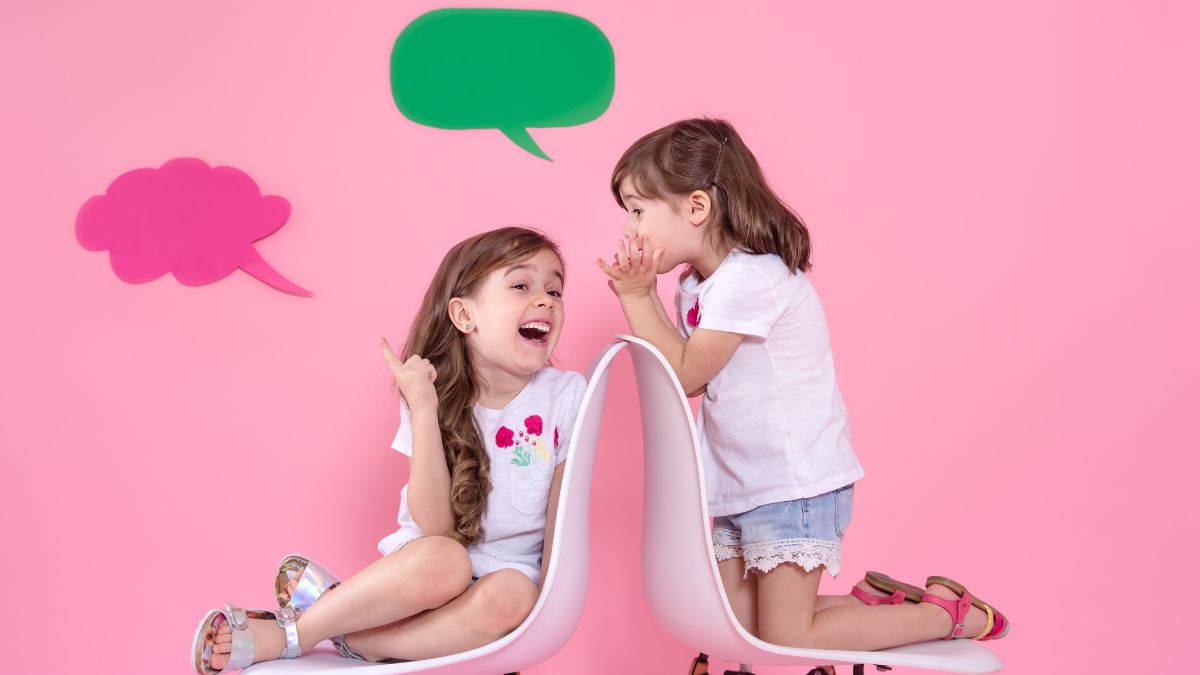Language is more than words—it’s connection in motion. In Applied Behavior Analysis (ABA), understanding how verbal behavior works is key to unlocking communication potential. If you’ve ever wondered how therapists help children or individuals build meaningful speech patterns, learning about examples of verbal behavior ABA can make it all click.
These examples aren’t just textbook categories—they’re building blocks for communication, emotion, and independence. Let’s break down the main types of verbal behavior, explore how ABA therapy applies them, and look at the science-backed strategies that make these techniques so effective.
What Is Verbal Behavior in ABA Therapy?

Verbal behavior refers to any form of communication—spoken, gestured, signed, or symbol-based—that achieves a social outcome. In ABA, the focus is not on words alone, but on how they function. Instead of simply labeling objects or repeating phrases, verbal behavior therapy dives into the “why” behind speech.
Developed from B.F. Skinner’s 1957 work Verbal Behavior, this approach helps individuals learn to use language in functional ways—requesting needs, sharing experiences, or responding to others. ABA professionals observe the context of speech and teach through structured reinforcement, helping clients form meaningful language connections step by step.
At its heart, verbal behavior ABA is about turning sounds into shared understanding.
The 6 Primary Types of Verbal Behavior
Verbal behavior is divided into distinct categories called operants. Each serves a unique purpose in communication. Below are the six primary types, along with simple, relatable examples you’ll recognize in daily interactions.
| Type of Verbal Behavior | Function or Purpose | Example in ABA Therapy |
| Mand | Requesting something needed or wanted | Saying “cookie” to get a cookie |
| Tact | Labeling or naming objects, people, or actions | Pointing and saying “dog” when seeing a dog |
| Echoic | Repeating what someone else says | The therapist says “ball,” and the client repeats “ball.” |
| Intraverbal | Responding to another’s verbal cue | “What’s your name?” → “Liam” |
| Listener Responding (Receptive) | Following verbal directions | Hearing “Clap your hands” → clapping |
| Autoclitic | Adding details or modifying other verbal responses | Saying “I think” or “Maybe it’s red” |
Each operant plays a role in building functional communication. By practicing them in structured and natural settings, individuals learn to speak with purpose, not just repeat words.
1. Mands: The Power of Asking

Imagine communication starting with a need—hunger, comfort, or curiosity. Mands represent requests, and they are often the first verbal behaviors taught in therapy.
For example, when a child learns to say “juice” to receive juice, that’s a mand. The power of minds lies in motivation. They connect language directly to outcomes, reinforcing the idea that speaking up gets results.
Therapists use motivating operations—conditions that make a request meaningful—to teach mands naturally. Research shows that early mastery of mands often accelerates broader language development. Once individuals understand that words produce results, their drive to communicate grows exponentially.
In short: mands make communication rewarding.
2. Tacts: Naming the World Around Us

Facts are how we describe the world. When a child sees a dog and says, “dog,” that’s a tact. Unlike mands, tacts aren’t driven by desire; they’re about sharing information.
In ABA therapy, tacts are taught through repetition and reinforcement. A therapist might show a picture of a cat and say, “What is this? ” The child answers “cat,” earning praise or a token reward. Over time, tactics expand vocabulary and strengthen descriptive language.
Studies have shown that consistent tact training helps children with autism spectrum disorder (ASD) generalize words across settings—from therapy rooms to real-world contexts. This means the word “dog” isn’t just a sound anymore—it’s a meaningful label that connects to lived experience.
3. Echoics: The Building Blocks of Speech
Echoics are repetitions—the ability to imitate spoken words or sounds. They’re foundational for verbal learning because imitation bridges listening and speaking.
In practice, a therapist says “ball,” and the client repeats it. But beyond imitation, echoics build phonemic awareness—the understanding that sounds form language.
A 2022 study found that children who practiced echoic repetition for 12 weeks improved speech clarity by over 35%. This progress often leads to better pronunciation, attention, and eventual conversation skills.
By turning repetition into rhythm, echoic training helps speech sound natural, not mechanical.
4. Intraverbals: The Heart of Conversation
Here’s where communication becomes dynamic. Intraverbals are responses to verbal prompts—the back-and-forth rhythm of conversation.
For example:
- Therapist: “What do you wear on your feet? ”
- Client: “Shoes.”
Intraverbals teach social reciprocity—the give-and-take of dialogue. They help individuals build reciprocal communication, a skill essential for relationships, learning, and emotional connection.
Therapists use fill-in-the-blank games, question-answer drills, or storytelling to develop this skill. Once intraverbals are in place, conversations start to flow naturally.
Isn’t that the essence of communication—not just speaking, but connecting?
5. Listener Responding: Understanding Comes First
Before anyone can talk effectively, they must understand others. Listener responding (or receptive language) focuses on comprehending instructions and reactions.
For instance, when a therapist says, “Touch your head,” and the client does it—that’s the listener responding. It’s how individuals process and act on verbal input.
ABA therapists teach this through modeling, play-based interaction, and task variation. Studies indicate that receptive language training enhances both compliance and emotional growth by fostering a sense of awareness and confidence.
This form of verbal behavior builds the groundwork for functional communication—where listening and responding work hand in hand.
6. Autoclitics: Refining Language with Meaning
Autoclitics might sound complex, but they’re simply modifiers—the glue that gives structure and nuance to speech.
Consider the difference between saying “red car” and “I think it’s a red car.” The second example adds an autoclitic, expressing uncertainty or reflection.
Teaching autoclitics in ABA therapy helps individuals communicate thoughts, not just facts. It refines how they express opinions, time, and perspective. Over time, this leads to more mature, flexible communication skills—essential for independence and social interaction.
Bringing It Together: Functional Communication in Motion
Each type of verbal behavior builds upon the next. When combined, they form a fluid system of communication—from requesting to describing to conversing.
Therapists often blend these operants within sessions. A single activity, like playing with toys, may involve all six:
- The child demandsa toy (“ball!”).
- Tacts its color (“red ball”)
- Echoes new words (“bounce”)
- Answers a question (intraverbal)
- Follows a direction (listener responding)
- Adds a detail (autoclitic: “I think it’s soft”)
This integrated approach transforms speech from isolated words into meaningful dialogue.
Proven Techniques in Verbal Behavior ABA
Effective verbal behavior programs rely on structured, evidence-based strategies. Here are key techniques used to strengthen language acquisition:
1. Discrete Trial Training (DTT)
Therapists break skills into small, teachable steps with clear prompts and reinforcements. It’s ideal for beginners learning foundational verbal operants like mands and tacts.
2. Natural Environment Teaching (NET)
Language happens in real-life settings—playgrounds, classrooms, and homes. NET uses spontaneous opportunities to teach verbal behavior during natural routines.
3. Incidental Teaching
This method relies on motivation. When a child shows interest in an item, the therapist prompts a verbal response before granting access—reinforcing communication through desire.
4. Verbal Behavior Milestones Assessment (VB-MAPP)
A structured tool to assess progress in verbal and social communication. It helps therapists individualize programs and track mastery across different operants.
5. Reinforcement Strategies
Positive reinforcement—verbal praise, tokens, or play—strengthens desired verbal responses. Studies show consistent reinforcement boosts response rates by over 60% within 10 sessions.
The Science Behind Success
Modern studies validate verbal behavior therapy as one of the most effective language interventions within ABA. According to a 2023 clinical review, children participating in verbal behavior programs demonstrated improvements in spontaneous communication by up to 45% within six months.
Neuroscientific evidence supports this too—verbal training activates regions in the brain responsible for social cognition and motivation, not just speech production. In other words, the therapy helps individuals want to communicate, not just learn how to.
That’s the magic of verbal behavior ABA—it transforms communication into connection.
Frequently Asked Questions
1. What’s the main goal of verbal behavior therapy in ABA?
The goal is to help individuals use language functionally—to request, label, respond, and engage in real conversation that meets their daily needs.
2. How is verbal behavior different from speech therapy?
Speech therapy focuses on articulation and pronunciation. Verbal behavior therapy focuses on function—teaching why we say something, not just how.
3. Can verbal behavior therapy be used for nonverbal individuals?
Yes. Therapists adapt it using gestures, picture exchange systems, or assistive devices to promote reciprocal communication and interaction.
4. What’s the first verbal behavior usually taught?
Typically, mands—because they’re tied to motivation. Learning that speaking up gets results encourages further communication.
5. How do I find verbal behavior therapy near me?
You can search “ABA verbal behavior clinics near me” to locate certified practitioners who specialize in functional communication training.
Building Meaningful Connections Through Verbal Behavior
Every meaningful conversation starts with a single sound—a word that connects two people. Majestic Care ABA utilizes verbal behavior ABA to transform simple sounds into purpose, emotion, and genuine understanding. The heart of their approach lies in nurturing communication that feels natural and empowering, creating steady progress through positive engagement and proven ABA techniques.
From asking for help to sharing joy, verbal behavior therapy doesn’t just teach language; it teaches connection—something Majestic Care ABA proudly fosters for families and individuals across Colorado. Whether you’re exploring ABA for the first time or seeking ways to strengthen communication growth, our team is here to guide you every step of the way.
Reach out to us today to discover how personalized ABA strategies can make every word—spoken, signed, or shared—a bridge toward meaningful connection.


